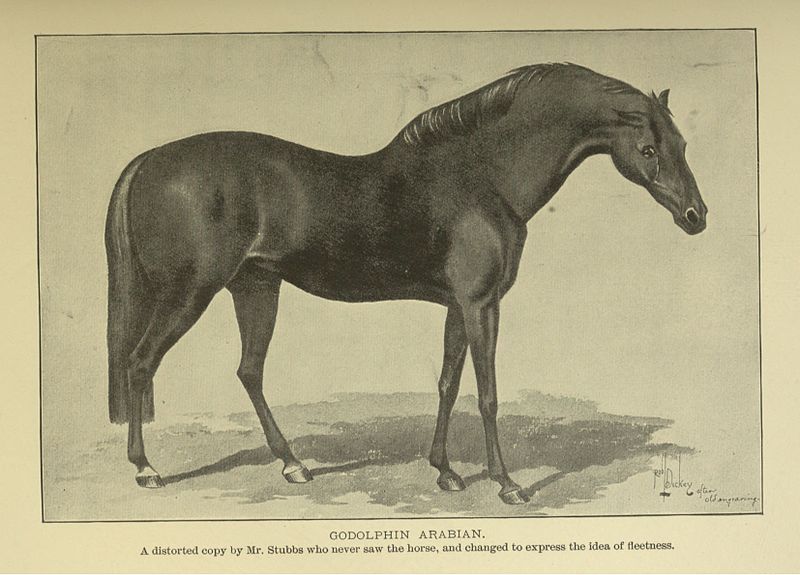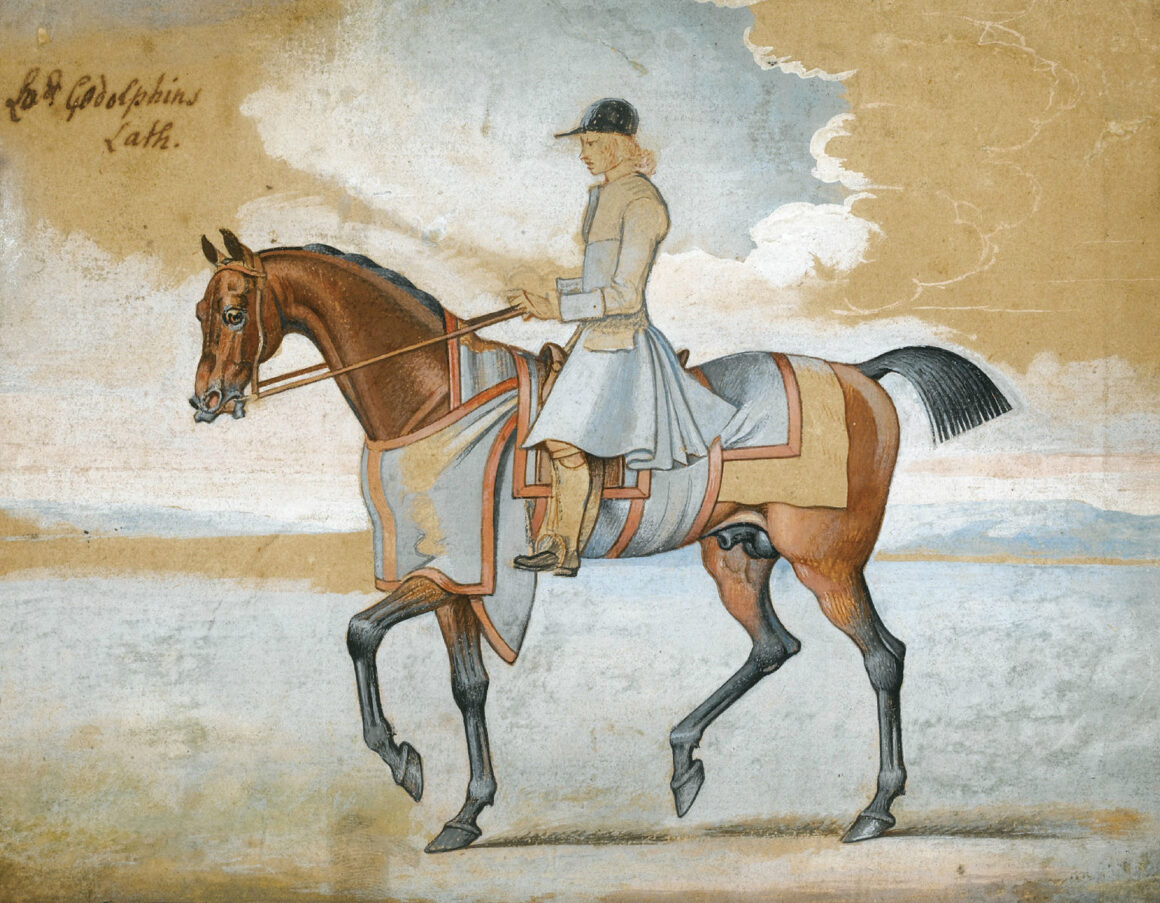Horse-crazy kids often grow up reading the books by Marguerite Henry. I was no different and loved reading about Misty of Chincoteague, Stormy, Black Gold, and of course, King of the Wind. He was a real horse and known as the Godolphin Arabian – one of three founding sires of the Thoroughbred horse breed.

In King of the Wind: The Story of the Godolphin Arabian, Henry introduces us to a horse named Sham that was born in Morocco, and Agba, the stable boy that accompanies the horse all the way to England. Henry’s story is told as the classic hero’s journey, but I wondered how much of it was true.
The Early Years
The Godolphin Arabian was born around 1724 in Yemen, a country to the south of Saudia Arabia. Sham likely was his original name. The Godolphin Arabian name came later when he was owned by Francis Godolphin in England. The custom was to refer to horses by their owner’s name. But the story begins long before that.
Sham was a beautiful bay, almost a golden color, although his personality might not have been so golden. He challenged the stable boys and handlers with his fiery attitude. His only white marking was on the heel of his off-side hindfoot. Sham was about 15-hands tall and known for his dished face, the crest in his neck, powerful hindquarters, and arched tail, all features that the artists always portrayed in their paintings.
There was controversy over whether Sham was an Arabian or a Barb. Both breeds have similar characteristics. Some reports state that the Godolphin Arabian was referred to as a Barb. However, modern scientific methods finally answered the question when DNA studies of Sham’s descendants showed the phenotype of an Arabian, not a Barb.

Journey to England
Sham was exported to a stud farm in Tunis by way of Syria as a young stallion. King Louis XV of France received him as a gift in 1730. Here, the story we read in Marguerite Henry’s book starts to unfold, as most accounts agree that King Louis XV was not fond of Sham. It is unlikely that Sham ever pulled a water cart through the streets of Paris, although this is one of the stories that has survived the longest.
We do know that Edward Coke imported him to England. The horse remained at his stud farm in Derbyshire until 1733. After Coke’s untimely death, Roger Williams inherited the stallions but sold Sham to Francis Godolphin, the 2nd Earl of Godolphin. Sham moved to the stud at Wandlebury House in Cambridge. The location is near Newmarket, one of the famous racecourses in England, and in the end, this probably helped catapult the Godolphin Arabian to fame.
Famous Sons and Daughters
Again, Sham found himself in a situation where he was not the star of the show. Wandlebury House used him as a teaser stud. However, the mare Lady Roxana refused to be covered by the stallion Hobgoblin. The Godolphin Arabian bred her instead, and his story as a sire began.
Their foal, Lath was born the following year. He became a repeat winner of the Queen’s Plate at the Newmarket Races. They again bred Lady Roxana to the Godolphin Arabian and the colt Cade was born in 1734. Regulus was another prominent son, born in 1739. Cade and Regulus were athletic and talented, and finer horses than Lath was. Regulus became an important sire, and the grandfather of Eclipse through his daughter Spiletta.
Selima was a daughter of the Godolphin Arabian and out of a mare called Shireborn. She was a bay that was born in 1746. Interestingly enough, most of his foals were bay. Benjamin Tasker Jr. imported Selima to the American colonies, and thus started the Godolphin Arabian’s connection to the United States. She won numerous races in Maryland and Virginia between 1750 and 1753 before becoming a broodmare in Maryland.
Many of the Godolphin Arabian’s offspring won numerous races. Their track success helped him capture the leading sire award for Great Britain and Ireland in 1738, 1745, and 1747.
The Legacy of the Godolphin Arabian
They buried the Godolphin Arabian under a gateway in the stable block at Wandlebury House after he passed away at age 29 in 1753. They celebrated his life with cake and ale, and visitors still pay their respects when visiting Wandlebury House.
Although the story told in King of the Wind isn’t completely accurate, it made the Godolphin Arabian a household name. The bloodlines of Seabiscuit, Man o’War, and War Admiral all trace back to the Godolphin Arabian through their sires. Most go back to Cade – and those are some impressive bloodlines to be responsible for. Thoroughbreds still trace back to the Godolphin Arabian in their dam lines or middle pedigrees – Eclipse being the classic example. The Darley Arabian and his line became exceedingly popular and the majority of modern Thoroughbreds trace back to him.
History will forever intertwine the names of the three founding sires of the Thoroughbred breed – Godolphin Arabian, Darley Arabian, and Byerley Turk. Stables and racetracks around the world see their legacy daily. The Godolphin Arabian shared his beauty and talent with generations of horses. Whatever his story was, we know that it had a happy ending.
Sources: Thoroughbred Heritage, King of the Wind, and Misty of Chincoteague Foundation
